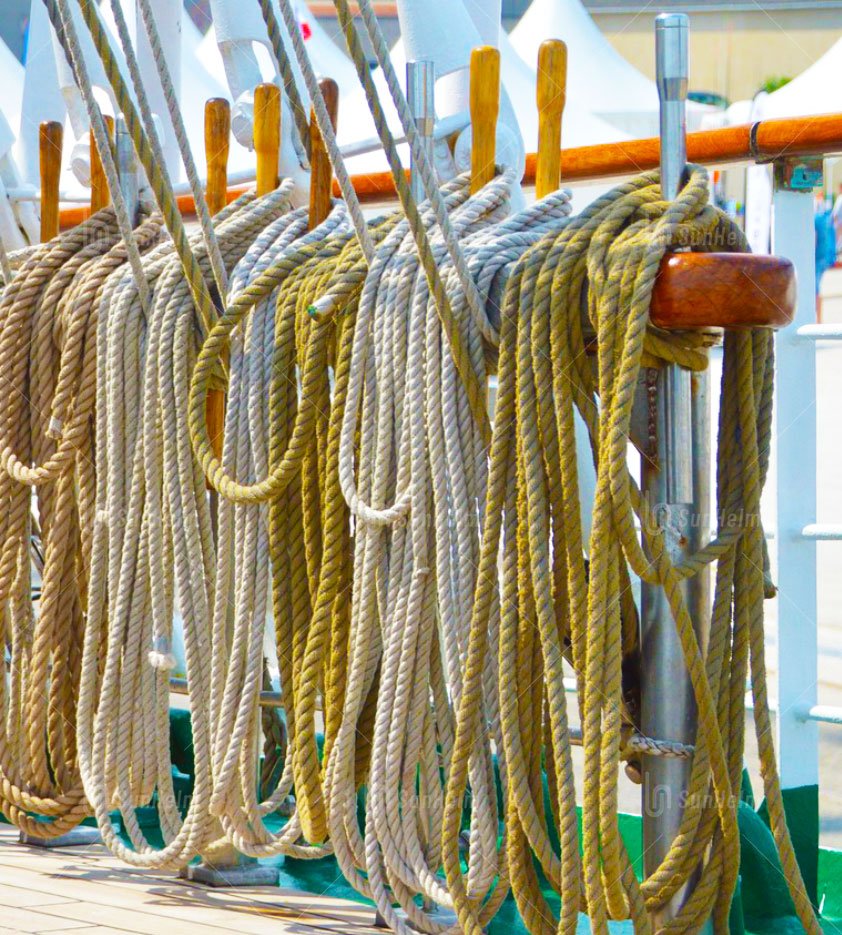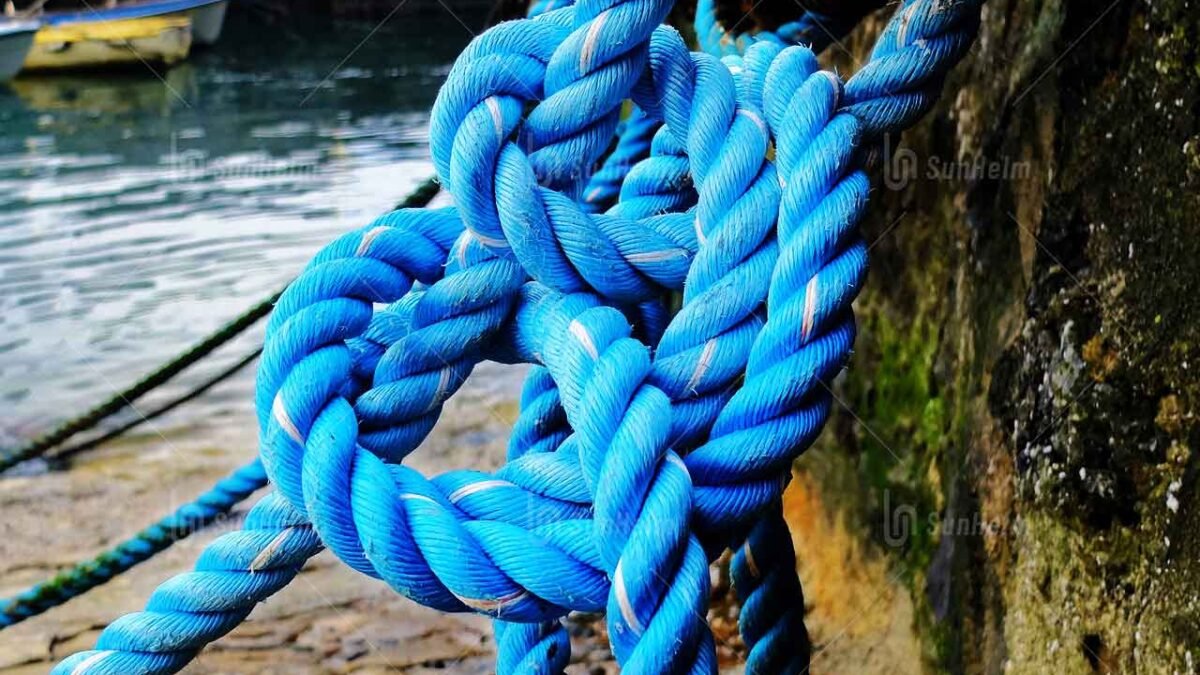What Rope Is Used to Moor Ships?
Most ships use mooring lines made of nylon, polyester, or high-performance synthetic fibers like HMPE to secure them to docks or other vessels. These ropes are strong, durable, and flexible—perfect for handling different marine environments.

Why Choosing the Right Mooring Rope Is Urgent
Securing a vessel sounds simple, but the wrong rope can cause serious problems. Imagine a strong current pulling a ship while docked. If the rope is too weak or brittle, it could snap, causing the ship to drift into nearby structures—or worse, people. At Sunhelm, we’ve helped customers avoid costly accidents just by switching to the right type of line. That’s why this issue matters now more than ever, especially with larger vessels and tighter harbors.
Featured Snippet: What’s the Best Mooring Rope Material?
Nylon ropes stretch and absorb shock well, making them perfect for dynamic conditions. Polyester ropes stretch less but offer better resistance to sunlight and abrasion.
Sunhelm’s Guide to Mooring Rope Types
To help you choose the best rope for mooring, here’s a breakdown of the most common options used today.
Nylon Mooring Lines
Nylon is one of the most popular choices. It’s flexible, stretchy, and strong. These features help the rope absorb movement caused by wind, waves, or nearby ship traffic. That’s why most recreational boats and short-term docks use nylon lines.
Pros:
- Excellent shock absorption
- Durable and weather-resistant
- Works well in harbors with changing tides
Polyester Mooring Lines
Polyester ropes stretch less than nylon. While they don’t absorb shock as well, they’re more resistant to UV rays and chafing. Because of that, polyester ropes are great for long-term docking where the vessel doesn’t move much.
Pros:
- Very strong
- Long lifespan in sunlight
- Ideal for permanent or fixed moorings
HMPE (e.g. Dyneema) Mooring Ropes
High-Modulus Polyethylene (HMPE) ropes like Dyneema are ultra-light and ultra-strong. They don’t stretch much, which makes them very safe—especially when under tension. Offshore vessels and commercial ships often choose HMPE for its unmatched performance.
Pros:
- Super high strength
- Low stretch = low snapback risk
- Easy to handle compared to steel cables
Wire Ropes
Wire ropes are still used in some heavy-duty marine applications. They’re not flexible and require special handling, but they offer extremely low stretch and long life under heavy loads.
Use case:
- Tugboats
- Tankers
- Offshore rigs
Hybrid Ropes
Hybrid mooring ropes combine the strength of synthetic fibers with the durability of wire or polyester. They offer a smart middle ground, especially for changing environments.
Use case:
- Mixed-use harbors
- Harsh weather zones
Featured Snippet: What Is a Hawser?
A hawser is a thick mooring rope used to tie or tow ships. You’ll find it on almost every large vessel, securing it to docks or other ships.
How to Choose the Right Mooring Rope (with Sunhelm Expertise)
Choosing the correct mooring rope depends on your vessel, your mooring conditions, and how often the vessel moves. Here’s a simple guide:
| Vessel Type | Rope Type | Why It Works |
|---|---|---|
| Small boats | Nylon (3-strand) | Absorbs motion from tides and waves |
| Yachts and sailboats | Double-braid nylon | Strong and flexible for frequent docking |
| Docked long-term boats | Polyester | Sunlight-resistant and low stretch |
| Offshore vessels | HMPE (Dyneema) | Strongest and lightest option available |
| Tankers/tugs | Wire rope | Handles huge loads with minimal give |
Sunhelm provides mooring solutions for all of these scenarios, ensuring that every rope we deliver is tested for safety and durability.
Why Choose Sunhelm Mooring Ropes?
Sunhelm ropes are made from premium marine-grade materials. We test every batch for UV resistance, tensile strength, and elasticity. With over a decade of experience, we’ve supported ports, fleets, and boatyards around the world. We don’t just sell rope—we help you dock safer.
FAQ
Q: What rope is best for docking a boat?
A: Nylon ropes are best for docking. They handle motion well and stretch under pressure, which reduces stress on the cleats.
Q: How long do mooring lines last?
A: Most mooring ropes last 5 to 10 years, depending on the environment. Regular checks help catch wear early.
Q: What size mooring rope do I need?
A: A good rule of thumb is 1/8 inch of rope diameter for every 9 feet of boat length. Sunhelm offers pre-sized options.
Q: Are synthetic ropes safe under tension?
A: Yes, especially if made from HMPE. These ropes stretch very little, reducing the risk of dangerous snapback injuries.
Final Thoughts: Don’t Leave Your Vessel’s Safety to Chance
Choosing the right rope makes a big difference. At Sunhelm, we help shipowners stay safe, efficient, and compliant. Whether you dock a small fishing boat or manage offshore rigs, we’ve got a rope that fits. Contact us today for expert advice and a custom quote.
Your ship deserves the strongest line. Choose Sunhelm, and moor with confidence.


